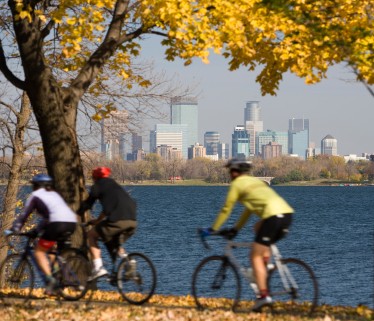
Update 1/21/11, 4:35 p.m.: I’ve modified my original description of HR 1018 to correct a mistatement on my part and to better reflect the views of the Washington bicycling community.
Update 1/24/11: PubliCola is now reporting that HR 1018 has been shelved.
With new legislatures in session in both Oregon and Washington, now is a good time to canvas the bicycle-related bills. Washington has a pair of bills that enjoy bipartisan sponsorship, while Oregon has a couple that actually restrict bicycling, including one that has pegged local outrage meters at 11. Let’s dig in.
The marquee bill in Washington is the “mutual responsibilties” bill, HR 1018 / SB 5193, the overarching purpose of which is clear enough: “every person riding a bicycle upon a roadway shall be granted all of the rights and shall be subject to all of the duties applicable to the driver of a vehicle…”
That may sound like business as usual, but the bill does contain some modifications to existing law, and it will be interesting to watch the debate that they generate. Among the changes are these:
- Cyclists who are traveling slower than the speed of traffic must ride as close to the right side of the road as the rider judges to be safe. The law also requires cyclists who are traveling slower than the speed of traffic to make use of available paved shoulders or bike lanes when they are safe to use.
- Bicyclists are prohibited from riding more than two abreast on normal roadways, unless they are in the act of passing.
- Vehicles traveling under 35 miles per hour must allow a minimum of 3 feet of space when passing bicycles or pedestrians. When traveling at higher speeds, vehicles must allow at least 5 feet of space.
The Bicycle Alliance of Washington, an advocacy organization that proposed the bill, has more detail here.
Also of importance in Washington is the “local speed limit” bill, HR 1217, which cuts red tape so that it’s easier for local jurisdictions to reduce speed limits. Rather than having to perform costly and time-consuming engineering and traffic investigations, this bill will simply let municipalities establish 20 mile-per-hour zones in residential areas at their discretion.
Oregon has a similar bill, SB 344, giving more discretion to localities to reduce speed limits on low-traffic residential roadways.
Speed limit reductions are a big benefit for public safety because even apparently small differences in vehicle speed have a huge impact on fatality rates in collisions. For pedestrians, the odds of death can drop from 45 percent at 30 mph to just 5 percent at 20 mph.
My read of the two speed limit bills indicates that Washington’s provides greater latitude to localities to reduce speed limits. It also enjoys much broader initial support; the Oregon bill is sponsored by a pair of Portland democrats, while the Washington bill has fully 18 official sponsors from around the state, including two eastern Washington republicans.
There’s also a third, albeit minor, bike bill in Washington: HR 1129 that would improve pedestrian and bicycle safety cirriculum in traffic schools. More on that here.
What’s really catching the attention of Northwest cyclists, however, are the two bills in Oregon that place restrictions on biking. The least contentious of these is the i-pod bill, HR 2602, sponsored by a suburban Portland-area democrat, that would make it illegal to bicycle “while wearing a listening device that is capable of receiving telephonic communication, radio broadcasts or recorded sounds.” More analysis, and plenty of reax, over at Bike Portland.
The more contentious bill in Oregon, by far, is HR 2228, which will make it illegal for cyclists to carry passengers under the age of 6, even in bike trailers. The bill is sponsored by Mitch Greenlick, a Portland democrat who’s also a professor at Oregon Health Sciences University, and who professes to be primarily concerned about safety. Bike Portland has two must-read posts on the bill—here and here—that include plenty of links to heated reactions.
The final bill to watch in Oregon is HB 2331, which asks the state transportation department to study the feasibility of requiring licenses for bicycle ownership. It’s an issue that’s surfaced before in Oregon bike politics to plenty of brouhaha.
I’ll try to keep you posted on these bills as the legislative sessions progress. In the meantime, I’m more than a little curious to hear readers thoughts. So have at it in comments!
Update 1/24/11: I should also mention Washington’s “vulnerable users” bill, SB 5326, which identifies specific penalities for drivers who hit pedestrians, cyclists, or others who are at particular risk.
Photo purchased on iStock.

Comments are closed.